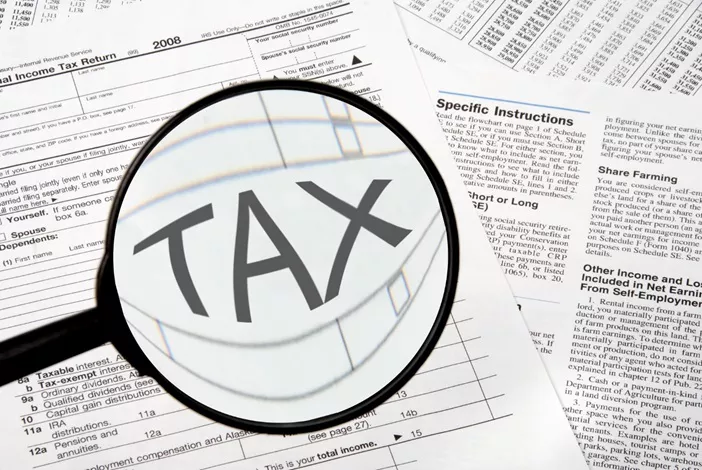Local governments play a crucial role in providing essential services such as education, public safety, and infrastructure. To finance these services, they depend largely on various tax revenues. Understanding which taxes make up the bulk of local government funding is important for understanding fiscal policies and their impact on local communities.
Property Taxes: The Backbone of Local Revenue
Among the various sources of revenue, property taxes are by far the most significant for local governments. Property taxes are levied on real estate properties such as land and buildings. In many local governments, property taxes represent the largest portion of revenue. For example, in the United States, property taxes account for approximately 30% of local government revenues. These taxes are primarily used to fund local services like public schools, law enforcement, fire departments, and infrastructure projects.
Property taxes are generally considered stable since real estate values tend to fluctuate less drastically than other assets, making them a reliable source of funding. However, the level of property taxes can vary significantly between different regions, with some areas imposing higher rates to fund more extensive services or to cover budget shortfalls.
Sales Taxes: A Significant Contribution
Following property taxes, sales taxes make up a notable portion of local revenues. Sales taxes are collected on the sale of goods and services within a locality. This type of tax is often used to fund local government services such as transportation projects, sanitation, and health services. Sales taxes can provide a significant portion of local funding, accounting for about 5% of general local revenues in many regions.
Sales taxes are also often subject to fluctuations in economic conditions. During times of economic growth, when consumer spending increases, sales tax revenues tend to rise. Conversely, during economic downturns, sales tax revenues can decline, affecting the local government’s ability to fund essential services.
Selective Sales Taxes: Targeted Contributions
In addition to general sales taxes, many local governments levy selective sales taxes on specific goods such as alcohol, tobacco, and fuel. These taxes, often called excise taxes, are a targeted revenue source for local governments. They tend to account for a smaller but still significant share of local revenues, typically around 2%. Selective sales taxes can be used for targeted initiatives, such as funding health programs, transportation infrastructure, or environmental projects related to the taxed products.
Selective sales taxes are often designed to encourage or discourage specific behaviors. For example, higher taxes on tobacco products are intended to reduce smoking rates, while fuel taxes may be used to finance road repairs and public transportation systems.
Income Taxes: A Smaller Yet Important Source
Some local governments also levy income taxes on individuals or businesses. While less common than property or sales taxes, income taxes can still contribute a meaningful portion of local revenues, especially in urban areas. Local income taxes generally account for about 2% of local government revenues.
The impact of income taxes on local budgets depends largely on the size and economic activity of the locality. For example, cities with large business sectors may benefit from higher local income tax revenues. In contrast, rural areas may not rely as heavily on income taxes, instead favoring property taxes and other sources of revenue.
Other Taxes: Diverse Revenue Streams
Local governments also generate income from various other taxes. These can include taxes on hotel stays, restaurant meals, and car rentals. These taxes, though less common, can still contribute a significant share of local revenues, typically accounting for about 3% of general revenues. These “other” taxes are often targeted at specific sectors of the economy and can be adjusted based on local priorities or needs.
For instance, a local government in a tourist-heavy area may rely on hotel taxes to fund tourism-related infrastructure and services. Similarly, taxes on restaurants and car rentals might be used to support local transit systems or public health initiatives.
Intergovernmental Transfers: Supplementing Local Funds
In addition to taxes, local governments also receive significant financial support through intergovernmental transfers. These transfers come from higher levels of government, such as state or national governments. In the United States, for example, state and federal transfers account for nearly 37% of local government revenues.
Intergovernmental transfers are vital for funding essential programs that local governments may not be able to fully finance on their own, such as education, Medicaid, and transportation infrastructure. These transfers can help balance budgets and ensure that communities receive the necessary resources for public services.
Japan’s Local Tax Structure: A Comparative Overview
In countries like Japan, local governments also rely heavily on taxes to fund their operations. In fiscal year 2021, local taxes accounted for 33.1% of the revenue for local governments. The breakdown includes:
-
Local taxes: 33.1%
-
National treasury disbursements: 25%
-
Local allocation taxes: 15.2%
-
Local bonds: 9.2%
This breakdown demonstrates that local taxes are a significant source of revenue in Japan, but they are complemented by transfers from the national government and other forms of financing, such as local bonds.
Conclusion
Property taxes remain the cornerstone of local government funding, providing the most consistent and significant source of revenue. However, local governments also rely on a mix of sales taxes, income taxes, and intergovernmental transfers to fund services and maintain infrastructure. Understanding the sources of local government revenue can help citizens and policymakers make informed decisions about tax policies and the allocation of public funds.
Related Topics:


